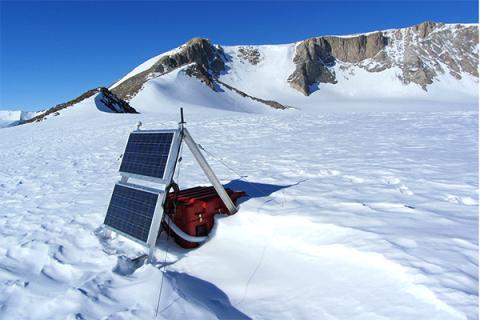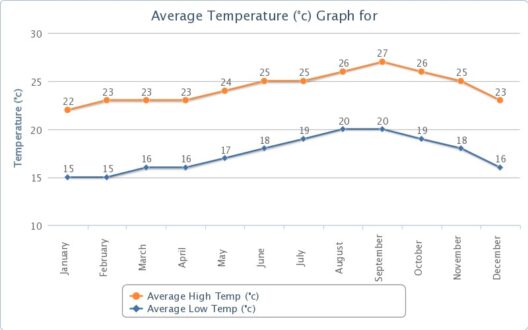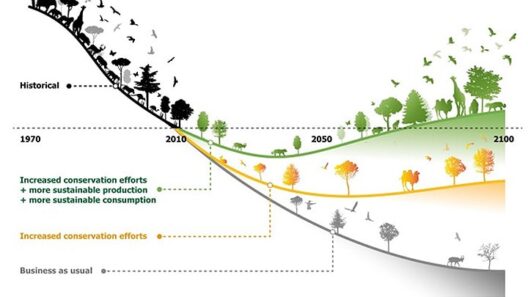As climate change continues to loom large over our world, an increasingly pressing question arises: What will happen to our coastlines and coastal communities as sea levels rise? The implications extend far beyond sandy beaches and picturesque shorelines. They permeate through urban development, infrastructure planning, environmental ecosystems, and even human migration. Therefore, it is pivotal to examine the complexities behind predicting sea level rise in our warming world.
The intricate dance between rising temperatures and melting ice sheets generates significant concern. One of the key components impacting sea level rise is the polar ice caps, primarily in Greenland and Antarctica. These vast expanses of ice serve as natural barriers that help regulate sea levels. As global temperatures elevate, the melting of these ice masses accelerates. Studies indicate that if the West Antarctic Ice Sheet were to completely melt, sea levels could rise by over three meters, inundating countless coastal communities and displacing millions of people over time.
But how does one ascertain the exact pace at which these phenomena will occur? This is where the predictive models come into play. Sophisticated climate models employ a mélange of empirical data and scientific projections to simulate potential future states of our planet. These models incorporate various parameters, including atmospheric temperatures, oceanic conditions, ice sheet dynamics, and even socio-economic factors. However, predicting sea level rise is akin to piecing together a complex puzzle with many missing pieces.
One pivotal challenge in forecasting sea level rise lies in understanding the nonlinear responses of ice sheets to climate shifts. It’s a somber puzzle: ice doesn’t vanish in a simple, linear fashion. Instead, it behaves erratically—sometimes slowly losing mass and sometimes abruptly collapsing. This unpredictability can lead to significant underestimations of future sea level metrics, compelling researchers to grapple with a multitude of scenarios.
Furthermore, global warming influences thermal expansion of seawater. As our oceans heat up, water expands and contributes further to rising sea levels. This thermodynamic phenomenon intensifies the urgency to mitigate greenhouse gas emissions. What’s more, ocean currents also play a vital role in redistributing heat around the planet. Changes in these currents can exacerbate local sea level variations, manifesting intricate regional impacts. For instance, cities like Miami and New Orleans could face different degrees of seafront vulnerability compared to cities further north.
The interconnection between climate change and socioeconomic factors underlines another challenge in forecasting sea level rise. Urban planning often operates on short-term cycles, driven by immediate development goals rather than longer-term environmental considerations. Communities located in low-lying areas are caught in a menacing tug-of-war between economic development and environmental stewardship. As tempting as it might be to build seawalls, the reality is that they offer only temporary reprieve from rising waters. Investing in resilient architecture, retreating from the coast, or restoring natural buffers, like wetlands, are more sustainable options that need to be explored.
Engaging communities in proactive measures not only fosters resilience but also fuels awareness. Initiatives that educate residents about the implications of climate change can mobilize grassroots efforts. Imagine coastal cities hosting discussions about the prospect of retreating from established shorelines, or universities partnering with coastal communities to develop adaptive strategies that are inclusive of diverse voices. Such collaborative approaches have the potential to unite stakeholders under a common goal: to safeguard our planet while facilitating sustainable growth.
The role of technology cannot be overstated. Remote sensing and satellite data increasingly allow scientists to gather comprehensive measurements of sea level changes globally. Instruments such as altimetry satellites provide critical information on variations in sea levels and ice sheet loss—data that are indispensable in shaping future climate models. However, the utility of such technology extends beyond mere data collection; it offers actionable insights that can inform local and national policies oriented toward climate resilience.
As we dissect the complexities of sea level rise, we need to consider not just the immediacy of its effects but also the long-term implications. The uncertainty cloaked within predictive modeling poses challenges, but it also presents opportunities for innovation, collaboration, and change. By channeling efforts into interdisciplinary studies, integrating scientific expertise with knowledge from social sciences and urban planning, we can navigate the murky waters of climate change with greater acuity.
As we ponder the future, one might playfully ask: What if the answer to the dilemma of rising seas lies not just in high-tech solutions, but also in returning to simpler, sustainable practices? For example, investing in green infrastructure, such as mussel reefs or living shorelines, could prove advantageous. These natural systems not only buffer against storm surges and flooding, but also promote biodiversity and ecosystem health.
In conclusion, the question of predicting sea level rise in a warming world remains multifaceted, complicated by scientific challenges, social implications, and ethical responsibilities. As the evidence mounts, it is imperative that communities around the globe come together, fostering dialogues that embrace innovation, adaptability, and foresight. Navigating the future of our coastlines requires collective action, informed decision-making, and a commitment to preserving our planet for generations to come. The tide may be rising, but so can our resolve to meet this challenge head-on.






